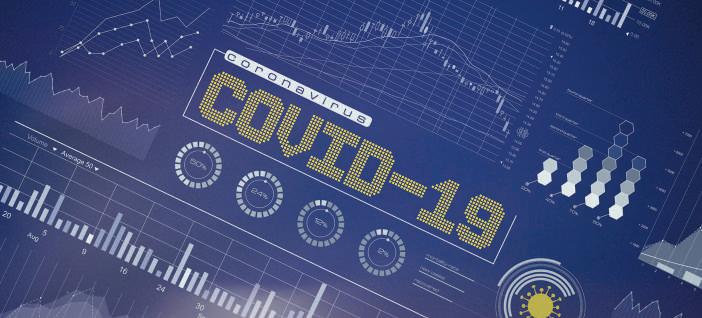
11 minute read
Pharma’s Quantum Leap: Launching New Medicine in the Age of AI
from IPI Autumn 2020
by Senglobal
The importance of the pharmaceutical industry has been thrown into sharp relief by the COVID-19 pandemic, with governments, business, and everyday people pinning their hopes for the future on the industry’s development of a vaccine or treatment. The pandemic has also exposed pharma’s challenges to the public. Commentators and leaders have expressed shock at how long the discovery and testing processes will take to find a vaccine or treatment. The US President even met with top pharma executives early in the pandemic to push them to go faster – only to be rebuffed and told the discovery process and drug trials cannot be accelerated all that much.
The truth is the pharmaceutical industry has long been squeezed by tight regulation, cost controls on medicines, and the necessarily extensive drug discovery and research process. There is some hope, however, we are on the cusp of a change across the sector. In February 2020, a team at MIT discovered a new antibiotic in record time using a machine learning algorithm. Will AI technology usher in a quantum leap in pharmaceuticals? Will this new technology solve some of pharma’s longstanding structural problems?
Advertisement
Pharma: Between a Rock and a Hard Place The future may be rosy, however, the pharma sector faces significant challenges at the moment. The problem is the sheer cost of bringing a drug to market remains exceedingly high and many drugs fail before ever reaching the market. The average cost of drug development varies greatly across the pharma industry, which makes it difficult to pinpoint accurate data. The Tufts Center for the Study of Drug Development puts the cost of bringing a drug from research to the market at $2.7 billion, while a study by JAMA Network pins the cost between $314 million and $2.8 billion. The point is clear no matter which study you believe: it is monumentally expensive to develop new drug treatments.
Drug costs soar because of the nature of research and the fact only about half of the chemical compounds identified in a study make it to the human drug trial or Phase III, with the others being discarded or at best set aside for future research. The costs are also driven up by the necessary regulatory research framework in which research operates and by the subsequent required reporting.
Even when a medicine reaches Phase III, it’s not guaranteed to make it to market. Phase III is often the most expensive part of bringing a drug to market and can last up to several years, depending on the drug being evaluated. At the conclusion of the Phase III trial, medical writers must then manually go through the data and write the daunting CSR (clinical study report), a process which can take months or even a year.
Some industry analysts were surprised by lacklustre growth numbers in 2019 from some of the biggest pharma companies in the industry. It makes sense, however, when you look at the structural challenges in the industry. Soaring research costs coupled with crowding in the market (e.g. competitive companies that sell the same drugs and research the same topics), and controls on the costs of medicines all lead to squeezed industry profits.
Many in the pharmaceutical industry have hyped Artificial Intelligence (AI) as a panacea with the potential to cure pharma’s chronic problems. There are good use cases for AI technology and it can help the pharmaceutical industry in specific cases. We need to be careful, however, when we talk about AI. We need to stop thinking of it as magic and move to thinking of AI like any other technology: a tool with the potential to solve a problem. Identifying the right problems to solve is critical to leveraging the right solutions with tremendous impact.
Data: Why AI Makes Sense in Pharma AI is, at its core, computer software that analyses data, applies a reasoning process to the data, and then identifies patterns in the data to utilise — explaining and collating the data as output. Admittedly, this is a vague and highly technical definition so let’s look very briefly at an example. Many pharma companies are using natural language generation (NLG) to automate the writing of portions of the CSR report. NLG technology connects to structured clinical data, analyses it, and explains the results of the analysis in written language.
Simply put, good quality structured data is the fuel on which AI technology runs. Anecdotally, the longest pharma projects we’ve seen occurred due to the work that is required to structure and organise the data. The better structured the data, the faster an AI project can be deployed and the lower the overall cost of the project.
Challenges exist, but the pharmaceutical industry is well positioned to leverage AI.

Indeed, like pharma itself, AI is a data-driven industry. How does drug discovery work? Scientists analyse data sets, either to test hypotheses or to identify potential chemical reactions that could imply a pharmaceutical usage. Drug discovery is a data-driven pursuit. Likewise, the evaluation of drugs is data-driven. A medicine is trialled by a large group of people. Researchers collect and analyse data and then explain the results of the data and analysis in written form in the CSR. The data which fuels Big Pharma companies today is the data that will fuel great AI-driven pharma companies tomorrow.
A major challenge remains, however. The more structured and organised the data, the shorter the time-to-value of AI applications can be reached. Some pharma companies don’t have a sufficient level of structured and well-organised data. Their datasets are scattered across the organisation, in different silos and spreadsheets. Thankfully, this issue is being solved across the pharmaceutical industry. Conventional database and data-wrangling tools are allowing companies to organise and value their data assets at a marginal cost.
Top AI Use Cases in Pharma Today In early 2020, AI made headlines with drug discovery tools that helped pharma companies comb through existing clinical data to identify compounds that could help in treating COVID-19. These headlines followed press coverage in 2019 that showed pharma companies using AI technology to automatically write portions of the daunting CSR to help bring clinical trial drugs to market sooner.
AI headlines aren’t anything new. The technology has captured public opinion, reports up until that time. The value of NLG was immediately clear, but the cost of development and deployment three years ago was too high for many, and reaching a positive ROI was years out. But, the NLG sector has since changed.
and for better or worse, we are accustomed to seeing AI plastered across the media as either a panacea or a plague. How are pharma companies using AI and are there better use cases to start with? What about quick wins to prove that AI works and to create momentum within the organisation?
1. CSR Automation The CSR is based on clinical data collected during Phase III of the drug trial. The conventional approach is for medical writers to collate and analyse the data and then write their findings into the CSR document. This manual approach is time-consuming and expensive, and keeps medial writers and researchers from moving on to the next project.
Beginning in 2017, pharma companies began looking at NLG software to see if it could write portions of the CSR. NLG is an AI-powered technology that was best known for writing news stories and financial
New scalable NLG tools cut development time from months or years, to a matter of weeks. These newer tools also cost a fraction of their older counterparts and are built from the ground up to be secure, easy to use, and scalable.
Automating the CSR can cut months off of the time to write the report. Generally, you are not going to automate the whole CSR document with AI; instead, you are going to automate the data-driven sections, leaving the more creative analysis and connections for the medical writers. Leave automation to robots and creativity to humans. A win-win proposition.
2. Drug Discovery and Development One of the biggest challenges facing the pharmaceutical sector is the development of new treatments. Simultaneously, companies have had hundreds of failed drugs that have never made it to market for a number of reasons, but still cost a significant amount of money to develop. AIpowered drug discovery addresses both of these challenges: to harness AI to repurpose existing compounds and to discover new treatments.
Technically, there are different AIpowered drug discovery approaches. Sometimes, the approach is to look for treatments for a specific illness, for example COVID-19. In that case, you model

the disease and then mine existing data to identify correlations and outcomes at scale that might suggest a pharmacological treatment.
The technology uses the disease model to “test” the results of what will happen if the model is exposed to a range of compounds in various combinations. It throws combinations of compounds already present in the pharma’s inventory to see what might (virtually) work. This approach has shown a lot of promise because it is directed to look for specific outcomes within a specific model. It also requires well-structured data and an approach that protects patient data if that data is being used. However, this approach has made headlines for identifying new antibiotics and helping speed up vaccine development.
The second approach is much less structured. Here, the idea is to mine through clinical data to identify patterns and potentially identify compounds that could be repurposed to treat other ailments. The potential value here is no less high, because the technology could find potential treatments to diseases that researchers didn’t imagine were possible, using drugs that are already developed. Again, the challenge here is one of data quality.
Drug discovery use cases in AI are almost always powered by machine learning technology. Machine learning performs with the highest level of accuracy when it has the largest amount of data. This means that the pharmaceutical company using it must have large amounts of data to use, and that data must be well structured in well-organised databases.
3. Sales Enablement While not specifically a pharma-specific use case, pharma sales executives face unique challenges in terms of regulations and the sheer complexity of the products they sell. Again, this is a use case about data. Pharma companies have data on the medicine they sell; regulations are essentially business rules and they have customer data. The challenge is that human beings aren’t data processors, so simply giving this data to salespeople and hoping they will use it isn’t enough.
NLG technology analyses the product data and customer data, and identifies which regulations come into play, in order to generate a memo or script for each sales executive. Pharma companies get a quick win as they can test the software and how they work with it on a use case that also offers them boosts in sales productivity, creating a win-win.
4. Image Recognition in Radiology This use case is actually broader in terms of medical and pharma technology, and is one of the most exciting AI-powered diagnosis use cases we’ve seen. Correctly identifying tumours in x-rays is incredibly difficult, even for the most highly trained professionals. It’s also very time-consuming and there aren’t enough of these experts to expand capacity in many health systems.
AI-powered image recognition technology has improved immensely over the last five years. In the early 2010s, AI-powered image recognition software couldn’t even recognise the difference between a cat and a ball, or a cat and a car. It was hopelessly bad and many dismissed its potential. It was big news in early 2012 when Google trained its algorithm to correctly recognise a cat with 70% accuracy. Now, Google can correctly identify 5000 different species of plants and animals, and image recognition technology is going through a golden age.
In late 2019 and early 2020, a raft of new stories announced AI-powered algorithms could identify cancerous growths with higher accuracy than a doctor. A study overseen by Google Health found that AI could identify cancer in breast mammograms with fewer false positives and fewer false negatives than radiologists. In China, they even deployed this technology for tomographic screening of the lungs of COVID-19 patients, where the technology performed with 99% accuracy.
The key with this technology is to understand it isn’t a replacement for radiologists; it’s a tool to help them and make them perform better. To use the China example, the tool was given to radiologists and it highlighted areas of concern for them to review. This collaboration between man and machine often presents itself in the best use cases of AI. Too often, in the public imagination, AI is a replacement for workers. In this use case and many others, however, AI is used to better expand human capacity. Conclusion NLG technology is incredibly powerful computer software with the potential to fundamentally change the pharmaceutical industry and address some of the structural challenges the industry currently faces.
More than 30% of a CSR can be automated using AI-powered NLG software, significantly reducing the time needed to create the report and thus, the amount of time it takes to bring a drug to market. The increase in speed created by AI-powered natural language generation technology changes the economic balance pharmaceutical companies base their R&D and M&A investment on, and also helps them to create a competitive edge.

Robert Weissgraeber
Robert Weissgraeber is the Managing Director and CTO of AX Semantics, where he heads up product development and engineering. Robert is an in-demand speaker and an author on topics including agile software development and Natural Language Generation (NLG) technologies and a member of the Forbes Technology Council. Prior to AX Semantics, Roberts wasChief Product Officer at aexea. He studied Chemistry at Johannes Gutenberg University and did a research stint at Cornell University.










